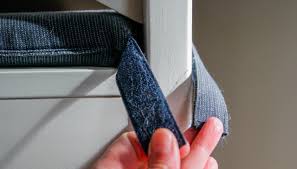Velcro is one of those simple inventions that has become an essential part of our daily lives. From keeping shoes securely fastened to managing cables and organizing all kinds of items, it’s hard to imagine life without it. However, velcro tape can lose its effectiveness over time, mainly due to the accumulation of lint, dirt, and grime. Instead of tossing out worn-out velcro, why not learn how to make it last longer? With a few easy tips and tricks, you can extend the life of your velcro and keep it functioning like new. Let’s dive in!
Understanding How Velcro Works
To truly appreciate how to care for velcro, it’s essential to understand how it works. Velcro consists of two parts: hooks and loops. The hooks are tiny, stiff, and often resemble small claws, while the loops are softer and act as a cozy landing spot for those hooks. When pressed together, the hooks latch onto the loops, creating a strong bond. However, this bond can weaken over time if the velcro gets clogged with dirt or lint, making it less effective.
Regular Cleaning is Key
One of the best ways to ensure your velcro lasts longer is to clean it regularly. Here’s how to do it effectively:
- Gentle Brushing: Use a soft-bristled brush, like a toothbrush, to gently brush away any lint or debris from the velcro tape. Make sure to brush in the direction of the hooks to avoid damaging them. This can help dislodge any trapped fibers without causing wear and tear.
- Use Adhesive Remover: If your velcro is particularly stubborn, you can use a bit of adhesive remover or rubbing alcohol on a cloth. Be cautious with this method, as you don’t want to saturate the velcro; just lightly dab the area. This can help remove any sticky residues that might be affecting the velcro’s performance.
- Wash When Necessary: If your velcro tape is removable (like on bags or shoes), you can wash it. Place it in a mesh laundry bag and wash it in cold water on a gentle cycle. Avoid using fabric softeners, as they can coat the velcro and reduce its effectiveness. Allow it to air dry completely before reattaching.
Avoiding Common Pitfalls
Preventing wear and tear is often easier than repairing it later. Here are some common pitfalls to avoid:
- Don’t Overuse: While velcro is designed for repeated use, excessive pulling or tugging can weaken the hooks and loops over time. Be mindful of how you use it, and avoid excessive strain, especially if the velcro has been in place for a while.
- Keep It Dry: Moisture can degrade the adhesive quality of velcro, making it less effective. If your velcro gets wet, allow it to dry thoroughly before reusing it. Avoid using velcro in damp areas, like the bathroom or outside in the rain, if possible.
- Store Properly: When storing items with velcro, make sure they’re clean and dry. Store them in a cool, dry place to prevent damage from heat or humidity. If you’re stacking items, avoid putting heavy objects on top of velcro-fastened items, as the pressure can compress the hooks and loops.
Smart Applications for Velcro
Sometimes, how you use velcro can influence its lifespan. Here are some smart applications to consider:
- Use for Temporary Fixes: If you need a temporary solution, velcro can be an excellent option. For example, if you have a torn fabric or a loose piece of furniture, use velcro to hold it together temporarily until you can make a more permanent repair. This minimizes stress on the velcro itself.
- Organizing Cables: Velcro cable ties are great for keeping cords organized. Instead of letting cables tangle and stress the velcro, bundle them neatly and attach them with velcro ties. This way, you reduce wear and tear and maintain the effectiveness of the velcro.
- DIY Projects: Incorporate velcro into your DIY projects wisely. For instance, if you’re creating wall hangings or soft toys, use velcro strategically to allow for easy changes and updates. This can help you avoid damaging the velcro while maintaining its functionality.
Replacement Isn’t the End
Sometimes, no matter how well you care for it, velcro tape might still wear out. When this happens, don’t fret! Replacing velcro is often straightforward and can breathe new life into your items.
- Easy Replacement: Many products with velcro are designed to allow for easy replacement. If your velcro is stitched on, you can often unpick it and sew on a new piece. If it’s adhesive-backed, peel off the old and stick on the new. Always choose high-quality velcro to ensure longevity.
- Upgrade Your Velcro: Not all velcro is created equal. When replacing your velcro, consider investing in a more durable option that can withstand more wear and tear. Look for heavy-duty varieties that are designed for industrial or outdoor use, especially if the velcro will be subjected to more demanding conditions.
Conclusion: Care Equals Longevity
In conclusion, taking a little time to care for your velcro tape can significantly extend its lifespan and functionality. Regular cleaning, avoiding common pitfalls, and using velcro smartly can help you get the most out of this handy material. Remember, while velcro is designed for durability, it does require some attention to maintain its effectiveness. So, the next time you notice your velcro losing its grip, try these tips before you think about replacing it. With the right care, you can keep your velcro working strong for a long time!






